Page 8 of 31
Re: Giraffe - Animal of the Month: April 2014
Posted: Mon Apr 14, 2014 3:34 pm
by nan
80%...

Re: Giraffe - Animal of the Month: April 2014
Posted: Mon Apr 14, 2014 3:58 pm
by BluTuna
nan wrote:80%...

Obviously you are only 80% baby goat!
Re: Giraffe - Animal of the Month: April 2014
Posted: Mon Apr 14, 2014 4:22 pm
by Flutterby
Re: Giraffe - Animal of the Month: April 2014
Posted: Tue Apr 15, 2014 11:02 am
by Flutterby
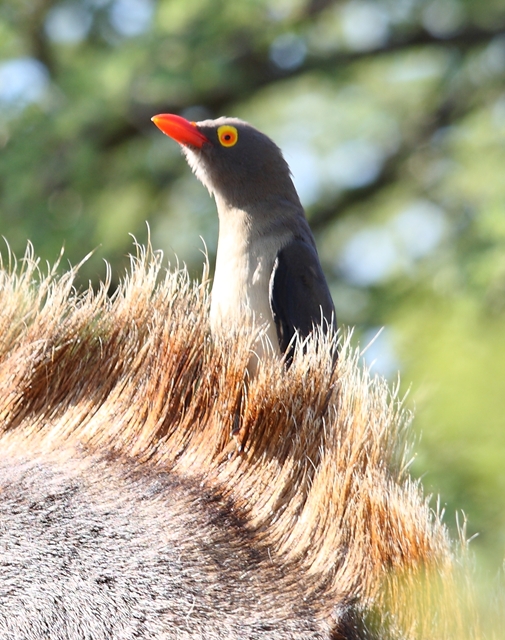 Giraffes and Oxpeckers - A Symbiotic Relationship
Giraffes and Oxpeckers - A Symbiotic Relationship
The oxpecker d and the giraffe have a symbiotic relationship that some scientists describe as mutualism and some as parasitism. This interspecies partnership is lopsided in favour of the giraffe because the giraffe can live without the oxpecker, while the oxpecker is dependent on the giraffe for much of his food.
This oxpecker has long been thought to remove ticks from its hosts, to the benefit of both — the bird eats the ticks, and the host is relieved of blood-sucking, disease-carrying parasites — but recent studies reveal that this process is less than benign. A secondary benefit to a host from the oxpecker's presence is a sort of early warning system, since the birds make a hissing sound if they sight an enemy. This is of less benefit to the giraffe than to other hosts because the giraffe has the advantage of great height and keen eyesight and is fully capable of spotting predators without the bird's assistance.
The two species, the red-billed and yellow-billed oxpecker, are perching birds with feet adapted for grasping, which allow them to ride on a host while looking for a meal. They sift through the host's hair looking for insects, but their first preference is for blood-swollen mature female ticks. This choice leaves immature disease-carrying ticks free to bite the host and pass on bacteria and viruses, the first blot on the bird's reputation as a host benefactor. According to researcher Paul Weeks, reporting in the journal "Behavioral Ecology," red-billed oxpeckers can and do enlarge tick bites and other wounds on hippos and cattle by probing them repeatedly for food in the form of blood, serum and tissue, casting them more as vampire-like parasites than as mutualists. This implies a far more complex symbiotic relationship between the birds and each of their various hosts, including the giraffe, than previously supposed.
A clear example of mutualism is the relationship between the Nile crocodile and the Egyptian plover: the crocodile leaves its mouth open while basking on the shore, and the bird walks in and picks bits of rotting flesh from between the croc's teeth; the plover gets food and the croc gets a cleaner mouth. The determining factor of mutualism is consent: the crocodile does not have to open its mouth for the bird and nobody forces the bird to visit a cleaning station. The giraffe, however, would have a hard time keeping oxpeckers off itself, so they tolerate the birds who cling to them and chow down selectively at the buffet on the giraffe's body.
Source:
http://animals.pawnation.com/relationsh ... -3911.html
Re: Giraffe - Animal of the Month: April 2014
Posted: Tue Apr 15, 2014 11:22 am
by Flutterby
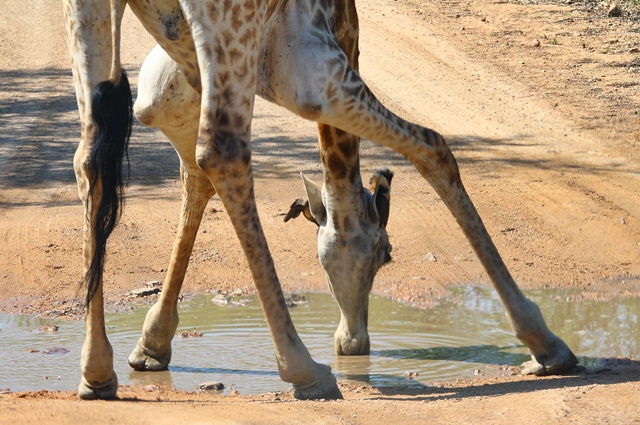
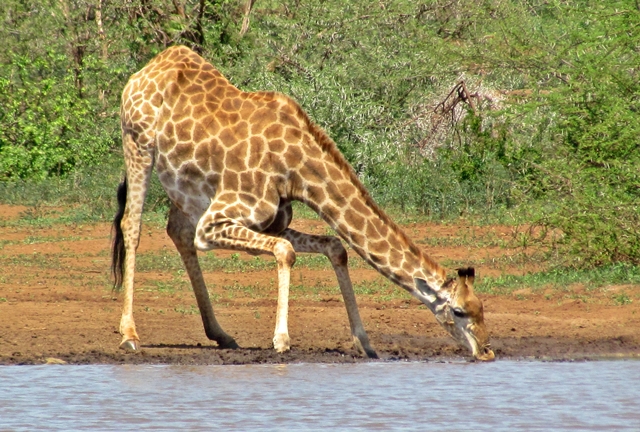
© Bush Brat
Giraffes can go for a long time without drinking water because their diet — especially acacia leaves, their favorite food — contains a lot of water. Ironically, despite its long neck, a giraffe's neck is too short to reach the ground. When they do get thirsty, they have to bend down awkwardly to drink, spreading their forelegs and bending the neck below body level. In most creatures this would cause a rush of blood to the head causing a possibly fatal increase of blood pressure in the giraffe’s head. This does not happen, though, because of specialized valves contained within the vessels of the giraffe’s neck. These valves work to block the blood being pumped to the brain during the giraffe’s water break. Furthermore, if the giraffe were to see a predator and try to run from it just after bending over, you would expect it to pass out because its blood pressure had dropped so low. Once again, however, the same network of valves saves the giraffe by routing the blood in a way that keeps the blood pressure constant.
Giraffe make easy targets for predators while drinking. To help protect themselves, giraffes usually go to watering holes together and take turns watching for predators.
Source:
https://www.apologeticspress.org/APCont ... ticle=1391
Re: Giraffe - Animal of the Month: April 2014
Posted: Tue Apr 15, 2014 3:43 pm
by nan
thanks for the explanation

here is another exemple... with Yellow-billed Oxpecker

Re: Giraffe - Animal of the Month: April 2014
Posted: Tue Apr 15, 2014 4:30 pm
by Flutterby
Nice!

I hope we see some up north.

Re: Giraffe - Animal of the Month: April 2014
Posted: Tue Apr 15, 2014 4:34 pm
by Super Mongoose
Thanx for the great info Flutters and great pics to go with it!
Re: Giraffe - Animal of the Month: April 2014
Posted: Tue Apr 15, 2014 4:35 pm
by Super Mongoose
Marakele Long Neck, November 2013.
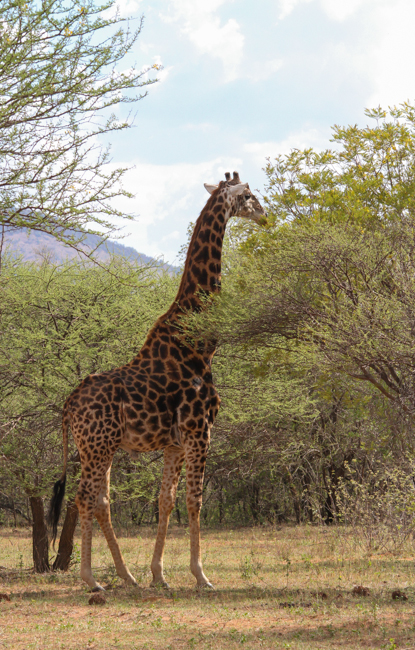
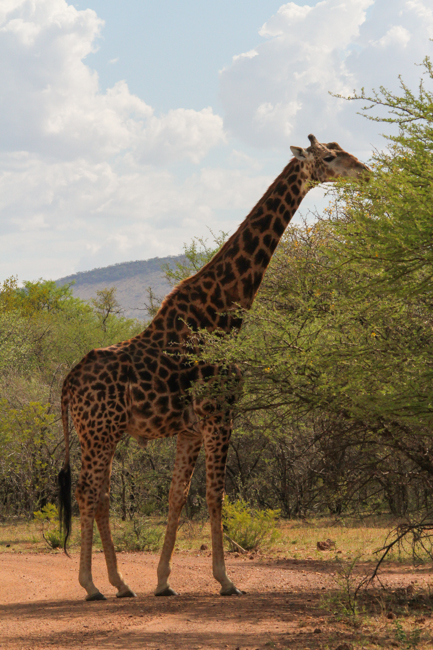
Re: Giraffe - Animal of the Month: April 2014
Posted: Tue Apr 15, 2014 4:42 pm
by Toko

It can get kinda crowded if there is only one giraffe available




 © Bush Brat
© Bush Brat


